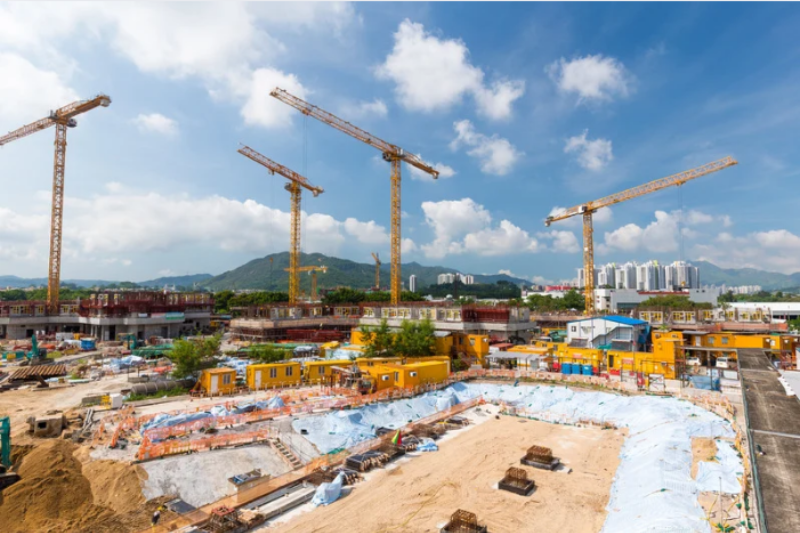
California’s climate, especially in regions like the Inland Empire, Los Angeles County, and the Central Valley, is known for its long, hot summers and recurring heatwaves. While the sunshine is great for tourism, it creates serious health risks for construction workers who spend hours on outdoor job sites with limited shade and little airflow. Day after day of exposure to rising temperatures, coupled with the physical demands of heavy lifting and long shifts, can quickly push the body past its limits.
Among all occupations, construction workers are some of the most at risk for heat illness. Whether building roads, framing homes, or operating machinery in direct sunlight, these workers face a very real threat of heat exhaustion and heatstroke—both of which can have life-altering or even fatal consequences if not addressed immediately.
Heat illness refers to a range of medical conditions caused by the body’s inability to cope with high temperatures—especially during strenuous physical activity like construction work. These conditions can range from mild heat cramps to life-threatening heatstroke. The longer a worker remains exposed to excessive heat without proper hydration, rest, or cooling, the more dangerous the condition becomes.
The most common types of heat illness include:
Construction workers are particularly vulnerable to heat illness for several reasons. First and foremost, their work typically takes place outdoors under direct sun exposure, often for long hours and in extreme conditions. But there are several other risk factors unique to construction jobs:
Recognizing the growing dangers of heat-related illnesses—especially in industries like construction—California has enacted some of the strongest heat illness prevention laws in the country. These protections are enforced by Cal/OSHA, the state’s Division of Occupational Safety and Health, under the Heat Illness Prevention Standard (Title 8, Section 3395).
This regulation applies to all outdoor workplaces, with construction sites specifically called out as high-risk environments. Employers in this field must follow strict safety protocols to prevent heat illness from harming their workers.
Under the Cal/OSHA standard, all California construction employers with outdoor workers are legally required to implement a written heat illness prevention plan. At minimum, this plan must ensure that:
When temperatures exceed 95°F, employers must implement additional protections for high-heat work environments. These include:
If you’ve suffered from heat exhaustion, heatstroke, or any heat-related illness while working construction in California, you are legally entitled to file a workers’ compensation claim. Under state law, any illness or injury that arises “out of and in the course of employment” qualifies for benefits—including those caused by heat exposure on a job site.
Filing a successful claim can provide you with several critical benefits to support your recovery and protect your income:
To preserve your right to these benefits, it is essential to report the heat illness to your employer as soon as possible—ideally on the same day it occurs. California law requires that workplace injuries be reported within 30 days, and the sooner you notify your employer, the stronger your case will be.
Your employer must then provide you with a DWC-1 Claim Form, which officially begins the workers’ compensation process. Complete this form carefully and keep a copy for your records. If your employer delays or refuses to cooperate, it’s critical to consult a workers’ comp attorney immediately.
As soon as symptoms appear, stop working and get to a shaded or cool area. If you're disoriented, fainting, or vomiting, call 911 or have a coworker do so immediately. Prompt medical documentation will be key in proving that your condition was serious and work-related.
Be sure to tell the medical provider that the illness occurred while on the job, and request a copy of your medical records.
Once you’re stable, inform your supervisor or employer in writing. Under California law, injuries must be reported within 30 days, but it's best to do it as soon as possible. Include basic details: the date, time, symptoms, and working conditions at the time of the incident.
If your employer delays or fails to take action, that could be a red flag—and you may need legal help to ensure your rights are upheld.
To strengthen your case, document the conditions of the work environment, including:
Photos, text messages, time logs, and witness names can all help support your workers’ comp claim or a Cal/OSHA complaint.
Finally, reach out to a legal professional who understands heat-related injury claims in construction. Insurance companies may downplay your symptoms or blame the illness on preexisting conditions. A skilled attorney can make sure your claim is taken seriously, filed correctly, and pursued to the fullest extent.
Heat illness on construction sites is more than just a hazard—it’s a preventable, recognized workplace injury under California law. Every construction worker has the right to work in a safe environment, with access to water, rest, shade, and proper training during high temperatures.
If you’ve suffered from heat exhaustion, heatstroke, or any related condition while on the job, you may be entitled to workers’ compensation benefits to cover your medical bills, lost wages, and recovery time. You may also have grounds for additional legal action if your employer violated state safety standards or ignored your health concerns.
You work hard to support your family. Don’t let employer neglect or unsafe working conditions derail your health or financial stability. At Tim Wright Law, we fight for construction workers throughout California who’ve been hurt by heat illness and other preventable jobsite injuries.
Contact Information:
📍 Tim Wright Law – Workers’ Comp Office
7657 Winnetka Ave. #134 - Winnetka, CA 91306
📞 (818) 428-1080
Facebook | Instagram | Twitter